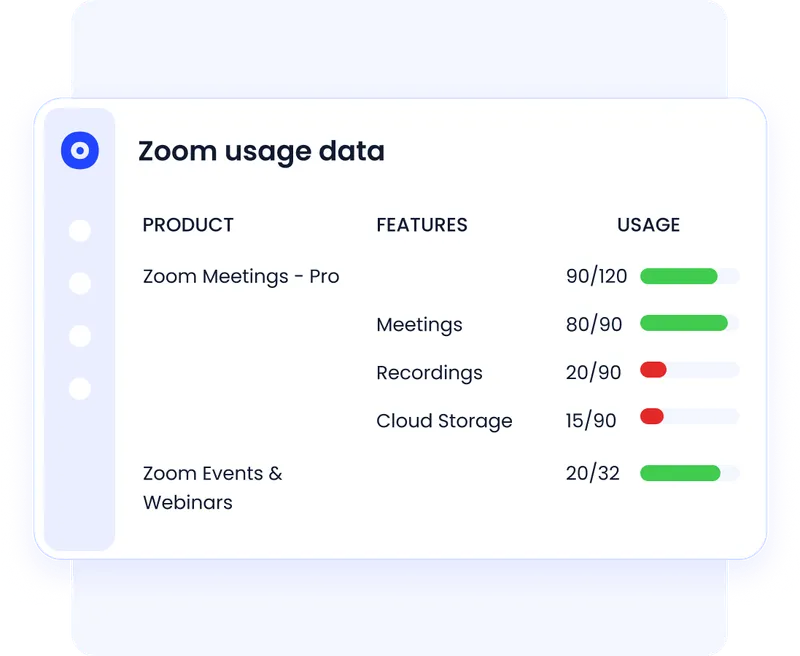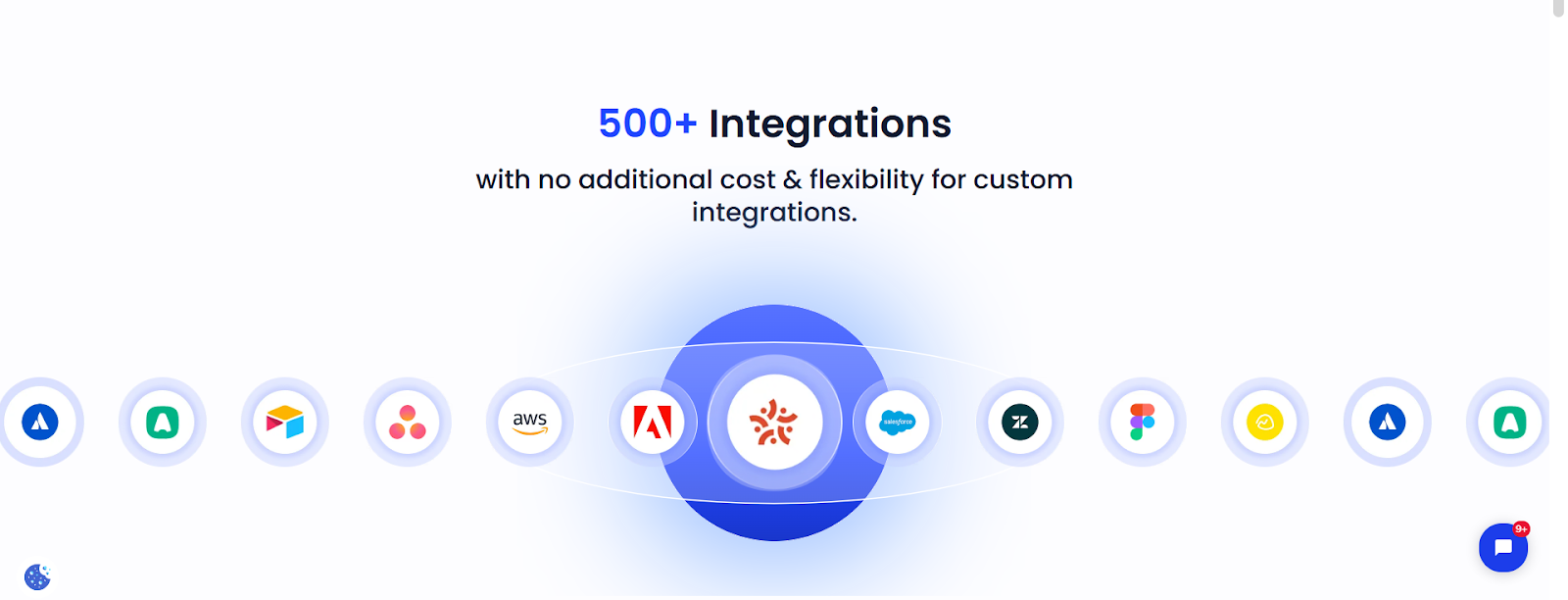HIPAA Compliance Checklist for 2025

According to a Deloitte report, 79% of companies consider digital procurement software and automation critical to achieving cost reductions and operational efficiency.
Yet, many organizations still rely on outdated manual processes, leading to vendor mismanagement, compliance issues, and excessive spend. This is where a procurement management system can make a significant impact.
Procurement Management Systems (PMS) centralize and automate the vendor selection process and the purchasing workflow, empowering organizations to streamline procurement processes, enhance transparency, and improve overall supply chain performance.
In this guide, we’ll cover everything from the basics of a procurement management system to how it improves vendor selection, the benefits it brings to purchasing, and the future of sourcing software.
TL;DR
- Procurement Management Systems (PMS) centralize vendor data and automate the entire purchasing workflow.
- They streamline the vendor selection process with features like supplier databases, automated scoring, and compliance checks.
PMS improves efficiency by reducing manual tasks, improving vendor management, and providing real-time spending insights. - Emerging trends include AI-driven procurement and sustainable vendor management practices.
- CloudEagle.ai helps enterprises modernize procurement with AI-powered vendor selection, spend optimization, and seamless integrations.
What is a Procurement Management System?
A procurement management system is a digital platform that automates and optimizes the end-to-end procurement process, from requisition to vendor selection, purchasing, and payment.
PMS solutions help businesses centralize vendor data, track purchase orders, manage contracts, and evaluate vendor performance.
Unlike traditional manual procurement processes, procurement management systems integrate with enterprise resource planning (ERP) tools and other business applications.
This ensures that all purchasing activities are transparent, auditable, and aligned with company policies.
What is the Procurement Management System?
In simple terms, a procurement management system acts as the digital hub for vendor selection, sourcing, and purchasing. It helps procurement teams reduce cycle times, avoid duplicate purchases, and make data-driven decisions.
Whether you call it purchasing software, sourcing software, or digital procurement software, the goal is the same: streamline the procurement process.
What are the Procurement Management Processes?
Effective procurement management ensures that organizations acquire goods and services efficiently, compliantly, and at optimal cost. A structured procurement process not only reduces risk but also aligns purchasing decisions with broader business goals.
Below is a streamlined breakdown of the key stages involved:
1. Needs Identification
Clarify and document the business requirement, whether it's a product, service, or solution, ensuring alignment with budget, timelines, and strategic objectives.
2. Vendor Selection & Qualification
Research, shortlist, and assess potential suppliers based on predefined criteria such as pricing, service levels, compliance standards, risk profile, and historical performance. This step may include issuing RFPs/RFQs and leveraging tools like CloudEagle for vendor benchmarking.
3. Purchase Requisition Submission
Stakeholders submit formal requests within internal systems, including scope, quantity, and justification. This initiates internal review and approval workflows.
4. Purchase Order (PO) Generation
Once approved, a PO is created and dispatched to the selected vendor, serving as the legal and financial commitment for the transaction.
5. Order Fulfillment & Delivery
Vendors deliver goods or perform services as specified in the PO. This phase often includes quality checks and coordination with receiving departments.
6. Invoice Validation & Payment Processing
Invoices are cross-verified against POs and delivery receipts. Upon validation, payments are processed per the agreed terms, typically through integrated ERP systems.
7. Vendor Performance Evaluation
Post-delivery, vendors are evaluated on key metrics such as quality, timeliness, communication, and adherence to SLAs. Insights from this step inform future procurement decisions and contract negotiations.
How a PMS Streamlines the Procurement Process
One of the biggest advantages of adopting a procurement management system is its ability to streamline procurement processes.
By eliminating repetitive tasks, providing real-time insights, and enhancing vendor management, PMS helps procurement teams operate with greater efficiency.
Supplier Database for Faster Shortlisting
A digital procurement software maintains a centralized supplier database that stores all vendor information, such as contact details, certifications, pricing, and past performance. This makes it easier for procurement teams to shortlist vendors quickly during the vendor selection process.
Automated Supplier Evaluation and Scoring
A PMS comes with built-in scoring models to evaluate vendors based on cost, quality, delivery timelines, and compliance. Automated supplier evaluation reduces human bias and accelerates the vendor selection process.
Vendor Risk Assessment and Compliance Checks
The right software for procurement includes tools for vendor risk assessment. It ensures that suppliers comply with legal, financial, and sustainability requirements before onboarding. Continuous compliance checks reduce organizational risk.
Collaboration and Communication with Vendors
A procurement management system enables seamless communication with vendors. Features like shared dashboards, automated notifications, and integrated messaging improve transparency and prevent delays in purchasing.
Visibility into Vendor Performance Metrics
By tracking key performance indicators (KPIs) such as on-time delivery, defect rates, and cost adherence, PMS provides organizations with clear visibility into vendor performance. This helps in better decision-making for future vendor selection.
How to Improve Efficiency in Procurement Management
To streamline procurement processes and achieve cost efficiencies, businesses should leverage the latest features of procurement management systems.
Use the Latest in Automated Processes
Automating tasks such as purchase order creation, invoice approvals, and vendor scoring saves time and minimizes errors. Leading purchasing software also integrates with payment platforms for seamless transactions.
Improved Vendor Management
A digital procurement software provides a single platform for managing vendor data, contracts, and performance reports. This helps businesses build stronger relationships with suppliers and improves negotiation outcomes.
Greater Control Over Business Spending
Procurement management systems give procurement leaders real-time insights into organizational spend. By analyzing purchasing data, companies can identify cost-saving opportunities and avoid maverick spending.
Better Compliance with Regulations
Staying compliant with regulatory requirements is critical for SaaS risk management. PMS automates compliance checks, tracks certifications, and flags vendors who fall short of requirements.
Valuable Reporting Features
Advanced reporting features in sourcing software help procurement teams analyze vendor performance, purchasing trends, and potential risks. These insights can drive continuous process improvement.
Future Trends in Procurement and Vendor Management
Procurement is undergoing a rapid transformation. Here are two key trends shaping the future of vendor management:
Artificial Intelligence in Procurement
Artificial Intelligence (AI) is making procurement smarter by predicting supplier risks, analyzing historical data for better sourcing decisions, and automating low-value tasks. AI-powered procurement management systems are increasingly common, enabling procurement teams to focus on strategic initiatives.
Sustainable Procurement Practice
Sustainability is now a top priority for procurement teams. Future-focused digital procurement software evaluates vendors not just on cost and quality but also on environmental and social impact. This ensures compliance with corporate sustainability goals.
How CloudEagle.ai Transforms Outsourced Procurement for Enterprises
As enterprises modernize procurement, many are turning to CloudEagle.ai, an AI-powered SaaS management and procurement platform that goes beyond just tracking vendors. It provides the automation, insights, and governance needed to reduce costs, eliminate waste, and accelerate purchasing decisions.
CloudEagle.ai helps procurement teams and their partners streamline every step of the purchasing lifecycle from vendor discovery to negotiation to renewal, while maintaining visibility and control across departments.
Key Benefits for Enterprises Using Outsourced Procurement Services:
1. AI-Powered Vendor Intelligence

CloudEagle.ai automates vendor evaluation using real-time usage data, benchmarked pricing, and metadata extraction from contracts. Procurement teams can instantly compare vendors, score proposals, and choose the right partners without manual research.
2. Centralized Contract and Spend Visibility

Procurement teams often lack a single source of truth. CloudEagle.ai solves this by centralizing all vendor documents, licensing terms, and renewal timelines. It pulls contract metadata using AI, so outsourced partners stay informed and aligned.
3. Automated Procurement Workflows

From intake to approvals, CloudEagle digitizes the entire procurement workflow. With Slack-enabled no-code workflows, outsourced procurement teams can accelerate purchase order cycles while maintaining policy compliance.
4. Spend Optimization & License Rationalization

CloudEagle’s cost optimization engine identifies unused licenses, duplicate apps, and redundant tools. This ensures that every dollar spent on SaaS is intentional, helping outsourced partners deliver measurable savings.
5. Seamless ERP and IT Integrations

The platform integrates with over 500 systems, including Coupa, Netsuite, Ironclad, Okta, and Jira, making it easy for internal and outsourced teams to collaborate without disruption.
Conclusion
A robust procurement management system is no longer optional; it’s a strategic necessity. By automating the vendor selection process, improving compliance, and giving real-time visibility into spend, PMS helps organizations cut costs and gain a competitive edge.
Digital procurement software is also evolving with artificial intelligence and sustainability at its core. For companies serious about improving efficiency and reducing risks, adopting the right software for procurement is the way forward.
FAQs
1. What is the vendor selection process?
The vendor selection process in procurement involves identifying, evaluating, and choosing suppliers who meet an organization’s specific needs. This process considers factors such as cost, quality, delivery timelines, and compliance.
2. What is the most important factor in vendor selection?
While multiple factors matter, vendor reliability and the ability to meet contractual obligations are often considered the most important.
3. What is a digital procurement system?
A digital procurement system refers to cloud-based software that automates procurement activities, from vendor onboarding to purchase order management and performance evaluation.
4. Which software is used for procurement?
Popular procurement software options include CloudEagle.ai, SAP Ariba, Coupa, and Kissflow. These solutions offer end-to-end procurement management features.
5. How to streamline the purchase order process?
You can streamline the purchase order process by using procurement management systems that automate approvals, maintain digital records, and integrate with finance systems for faster transactions.
6. How to streamline the order-to-cash process?
Automating each step, order capture, fulfillment, invoicing, and payment collection through purchasing software and ERP systems is the best way to streamline the order-to-cash process.

%201.svg)








.avif)




.avif)
.avif)




.png)









